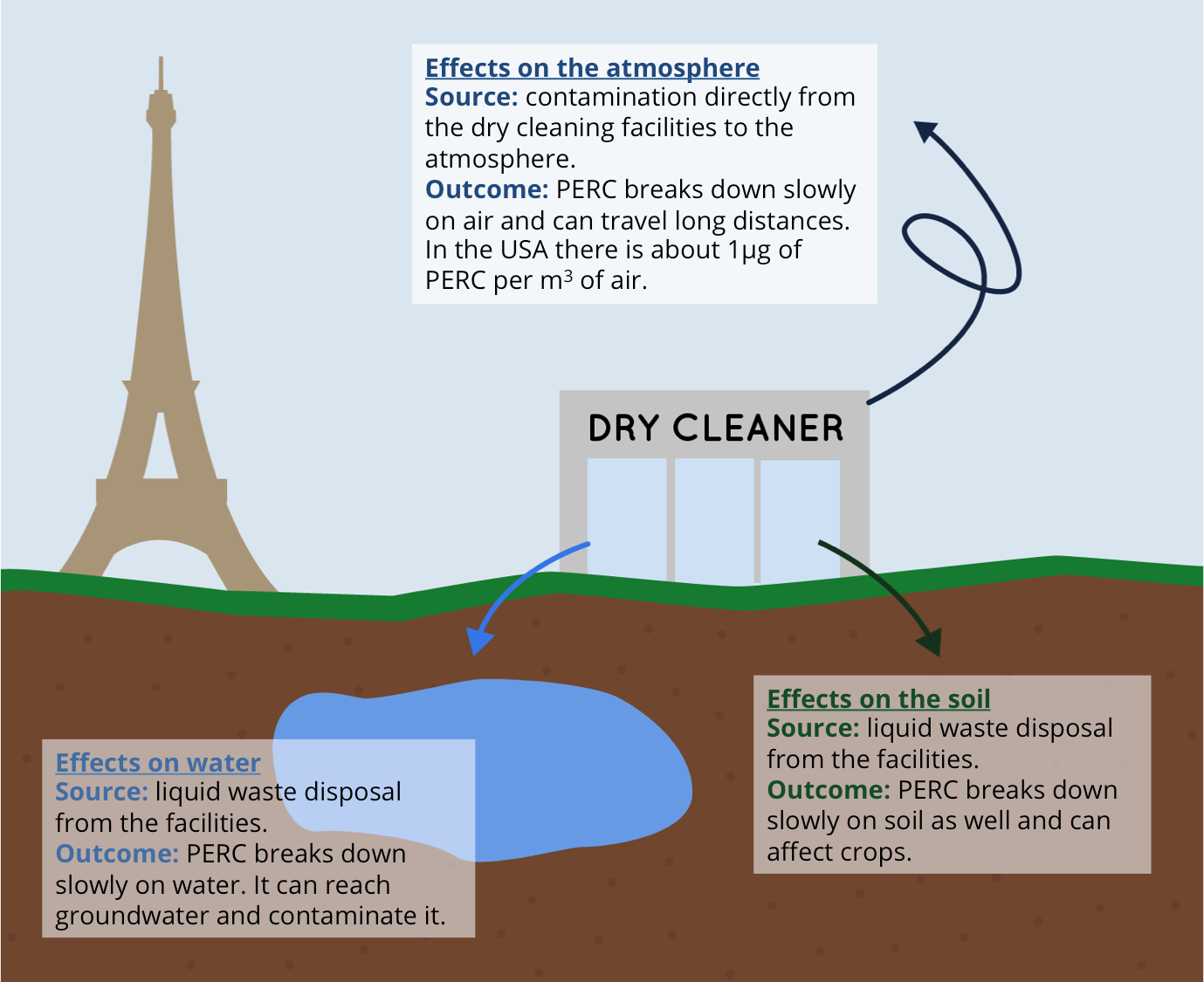The day we first learned about the laundry list of chemicals that coat and cover your clothing, it felt like learning a terrible secret. How was this not a bigger deal?
Ammonia? Chlorine? Formaldehyde?!
It’s one thing to comprehend that chemicals snuck into the production processes in some far off factory. It’s another thing to fully understand that Perfluorooctanoic Acid is possibly touching your skin at this moment.
The past few decades have seen an incredible rise in awareness around the chemicals used in farming and manufacturing, but somehow, the fashion industry has managed to hide the great secret that so many of those magical fabric features are created by awful-sounding chemicals.
We’ve seen some pieces over the years (Greenpeace has led the way), but they’ve been few and far between for such a visceral topic.
It was incredibly encouraging to see two pieces in the span of a week covering this exact topic. First, the always excellent Alden Wicker wrote a canonical piece, carefully laying out the chemicals used and the policy reasons this has continued.
Next, Bella Webb wrote a fantastic piece for Vogue Business on the environmental impact of clothing care, both from a carbon footprint impact, as well as a chemical one. The main takeaway: be sparing in your dry cleaning.
We know there is a lot of bad things in the world, and this topic feels overwhelming because it’s so ubiquitous. But, understanding chemicals in clothing is something that needs to move towards the top of the sustainability conversation as it’s something that affects each one of us, every single day.
– The Embrace Team
Just How Harmful are the Chemicals in Your Clothes? – Harper’s Bazaar
Over 60% of materials used to make all the clothes are synthetic fibers. During production, these fabrics are treated with thousands of harmful toxic chemicals, which pose a threat not only to the environment and biodiversity but also to human health.
Skin is our body’s largest organ and we should care about what we put on our bodies as much as we care about what we put in. The sad truth is there are people with Multiple Chemical Sensitivities (MCS), who have difficulty with new clothes and often need to wash and soak them multiple times or leave the products outside or in another room for many weeks or months before they can finally use them.
The chemicals in our clothes have become an invisible enemy that affects the health of the wearer. This is partly due to the fragmented fashion supply chain and the lack of stricter regulation on unsafe chemical use in apparel production on both the national and global levels.
Even brands that do test their products aren’t required to share the results with the public, and there hasn’t been nearly enough research on what exposure to most chemicals in isolation or in combination with each other does to the human body.
These are some recommendations on how to detoxify your closet:
- Opt for natural fiber organic clothing
- Avoid cheap knockoffs
- Wash new clothes before wearing them
- Shop brands that use Oeko-Text Standard, BlueSign or ZDHC Manufacturing Restricted Substances List and disclose the provenance of their materials
- When buying secondhand, ask the vendor whether chemical disinfectants or scents have been used
- Be aware of chemicals used in performance products like wrinkle-free or easy-care cotton products, waterproof or stain-repellent fabrics (check the list below for reference).

A new movement to reduce the hidden environmental cost of clothing care – Vogue Business
While a lot of awareness is raised around the apparel production’s impact on the environment, not much is said about what happens once the clothes are bought and worn. As reported by Vogue Business, clothing care accounts for around 30% of a garment’s total carbon footprint.
Just because your clothes labels say “dry-clean only” doesn’t mean you can’t wash them at home. It turns out brands overuse this recommendation due to a lack of the proper time and infrastructure to undertake their own laundry testing. But dry cleaning is a chemical-heavy process that’s both hard on the garment and the environment. One of the toxic chemicals used in dry cleaning process, known as PERC or Perchloroethylene will be completely banned in France by 2022 and in California by 2023.

For some “dry-clean only” garments it’s possible to use gentler washing cycles, lower temperatures and drying settings. Indeed, reduced washing and drying could deliver 186 million tonnes of carbon emission reductions. Better care habits can extend the longevity of clothes and reduce their environmental impact:
“Making the washing cycle more sustainable is not just about the frequency and temperature, it’s also the products you use. Brands, detergent manufacturers and washing machine manufacturers need to align, so the products and pre-sets extend the garments’ lifespan,” – Francois Souchet, Lead at The Ellen MacArthur Foundation’s Make Fashion Circular Initiative.
Engineered by NatureEach week we highlight one cutting-edge sustainable material innovation. Hit reply if there are any materials you’d like us to include! 🍏
Fruit-based leather has become an increasingly growing category in eco-friendly material production. Leather made of apple waste is one of the most popular substitutes for animal-derived leather, as they say, “an apple a day keeps the cow away“.
Named Appleskin, the vegan leather is made of apple waste, dyed and tanned naturally, without the need to use chemical-intensive processes and is said to be naturally UV resistant. This sustainable material, patented by Italian company Frumat, was awarded the Technology and Innovation prize at the Green Carpet Fashion Awards in 2018.
Several brands are already taking advantage of this innovative material to produce bags, shoes and other accessories.
Around the news
32 Sustainability efforts of the fashion industry in September 2020 – from the latest sustainable collections and take-back programs launches to new partnerships formed between fashion industry players, Fashion United listed a round-up of recent announcements.
WSJ’s Most Sustainably Managed Companies Finds Tatung and Kering Topping Innovation List – Kering, Gildan Activewear and Inditex, the only apparel companies to score in the Wall Street Journal’s “100 Most Sustainably Managed Companies in the World” ranking.
Moncler launches new sustainability commitments – the Italian luxury brand pledges carbon neutrality by 2021, transition to 100% renewable energy by 2023 and circularity push under “Born to Protect” sustainability plan.
Chemical companies unite for sustainability in textiles – textile chemical giants have come together to launch Sustainable Chemistry for the Textile Industry (SCTI), an alliance of chemical companies aimed to lead the textile and leather industries towards a more sustainable future.
First ever biodegradable clothes hanger – an exciting innovation from the Netherlands – clothing hangers made of potato starch, corn, beetroot and other CO2 absorbing raw materials.



